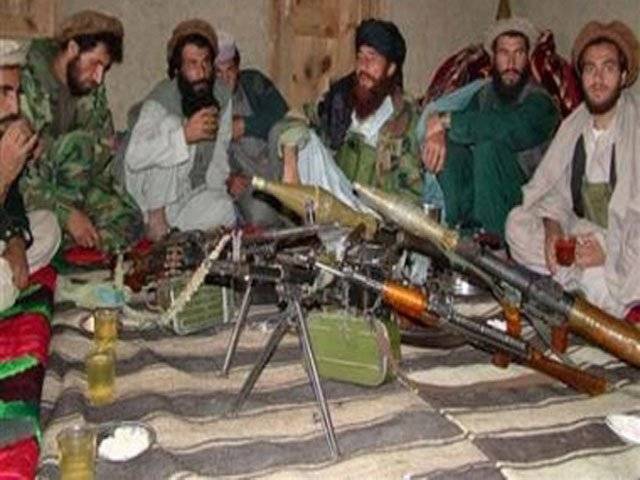For Afghan and Pakistani insurgents, Afghan civilians and coalition troops in Kandahar, there is only one question this spring. Will the Taliban return for the traditional fighting season from their winter sanctuaries in Pakistan after the snow blocking the high mountain passes melts and the annual opium poppy harvest is reaped? The Talibans intentions are of immense interest to the Royal 22e Regiment battle group. It is weeks away from beginning to wind down combat operations. By early July, the Van Doos and Canadas other warriors here will have withdrawn from all their familiar haunts - Kandahar City, Spin Boldak, Arghandab, Maiwand or the districts of Zhari, Dand and Panjwaii - where nearly 150 Canadians have died since the spring of 2006. It is a given that Afghan security forces and their allies from the US and Canada must prepare as if the Taliban, rested and flush with new weapons and recruits, will soon reappear. But the top Afghan soldier in Dand and Panjwaii says he does not believe the enemy will be back down his way in large numbers this year. They wish to come back. That is their plan, Brig.-Gen. Ahmed Habibi said. One, two or three of them might sneak in and plant an IED or ambush individually or on a small scale but there will be no big return of the Taliban. No way. The principal reason that 2011 may be different is the surge of about 20,000 Afghan and U.S. forces into Kandahar last year. The coalition now occupies almost every scrap of vital ground across the province. This is especially true of Panjwaii, where most of the Canadians are concentrated and of Canadas only other remaining Area of Responsibility, Dand, where since last summer about 90 per cent of the NATO troops have been Americans. Gorgan, the most southern base in Canadas Area of Responsibility, is a telling example. Twenty four months ago, NATO forces were infrequent visitors; the territory, as well as the rest of Dand, having been virtually conceded to the Taliban. Even one year ago, this was still contested ground, said Canadas senior gunner, Lt-Col Marcel McNichol. Today the Taliban hold virtually no sway in Gorgan, which like many villages in these parts, is dominated by medieval-like mud-domed homes. Protected by a small U.S. army forward operating base that is also home to a few Canadian troops, Gorgans school opened for the first time in years a few months ago with seven teachers. On a bucolic afternoon recently, farmers tended a well irrigated field next to Gorgan while other villagers scooted about on motorcycles and children sought shade next to a high wall made of dirt. Whats so special here is that the coalition side and the government side are a team. There is synergy, said Lt.-Col. Doug Sims, commander of a Germany-based US army Stryker battalion that reports to Canadian Brig-Gen Dean Milner. Much of Sims yearlong tour in Afghanistan was spent further north in Uruzgan. While not offering an opinion about whether the Taliban would soon be back in strength in Kandahar, The coalition and ISAF did a lot of solid work during the winter months, the colonel told a meeting attended by local officials and Afghan and Canadian army officers. Later, at a briefing at Sims headquarters in the town of Tarnak, the colonel rhymed off statistics to make his case. The number of military strong points (small bases close to the population) has grown from four last year to nine this year, the number of schools that have opened has increased from 15 to 34, the number of Afghan soldiers has increased from 153 to 520 and, perhaps most tellingly, the number of policemen has gone from zero to 254. When we arrived, the army would not deal with the police because they did not consider them to be professional, said Maj. Gaetan Bedard, a mentor to Afghan forces, who before deploying last year was an infantry instructor in New Brunswick. Now the police have, for the first time, had a six-week training course, the army is willing to deal with them. One of the remarkable changes in Kandahar lately has been that the Taliban have either had difficulty mustering fighters, or because of the bigger Afghan and coalition footprint, have been holding them back or sending them to other provinces. Open your eyes. This is coming apart for the insurgents, said Howard Coombs, a historian who advises Task Force Kandahar. This time last year, they were fighting us in groups of 10 or 15. Now they are much smaller. If they are smaller they are much less effective. The Taliban are flailing, trying to change the peoples will. But theyre losing. The Montreal Gazette
Friday, April 19, 2024
The Taliban are flailing

8:27 AM | April 19, 2024
8:09 AM | April 19, 2024
Minister reviews naan, roti prices
April 19, 2024
ETPB land worth Rs 40b retrieved so far
April 19, 2024
Lahore revamping plan to complete by June 30
April 19, 2024
CCPO reviews security for by-elections, NZ cricket matches
April 19, 2024
A Tense Neighbourhood
April 19, 2024
Dubai Underwater
April 19, 2024
X Debate Continues
April 19, 2024
Hepatitis Challenge
April 18, 2024
IMF Predictions
April 18, 2024
Kite tragedy
April 19, 2024
Discipline dilemma
April 19, 2024
Urgent plea
April 19, 2024
Justice denied
April 18, 2024
AI dilemmas unveiled
April 18, 2024
ePaper - Nawaiwaqt
Advertisement
Nawaiwaqt Group | Copyright © 2024





